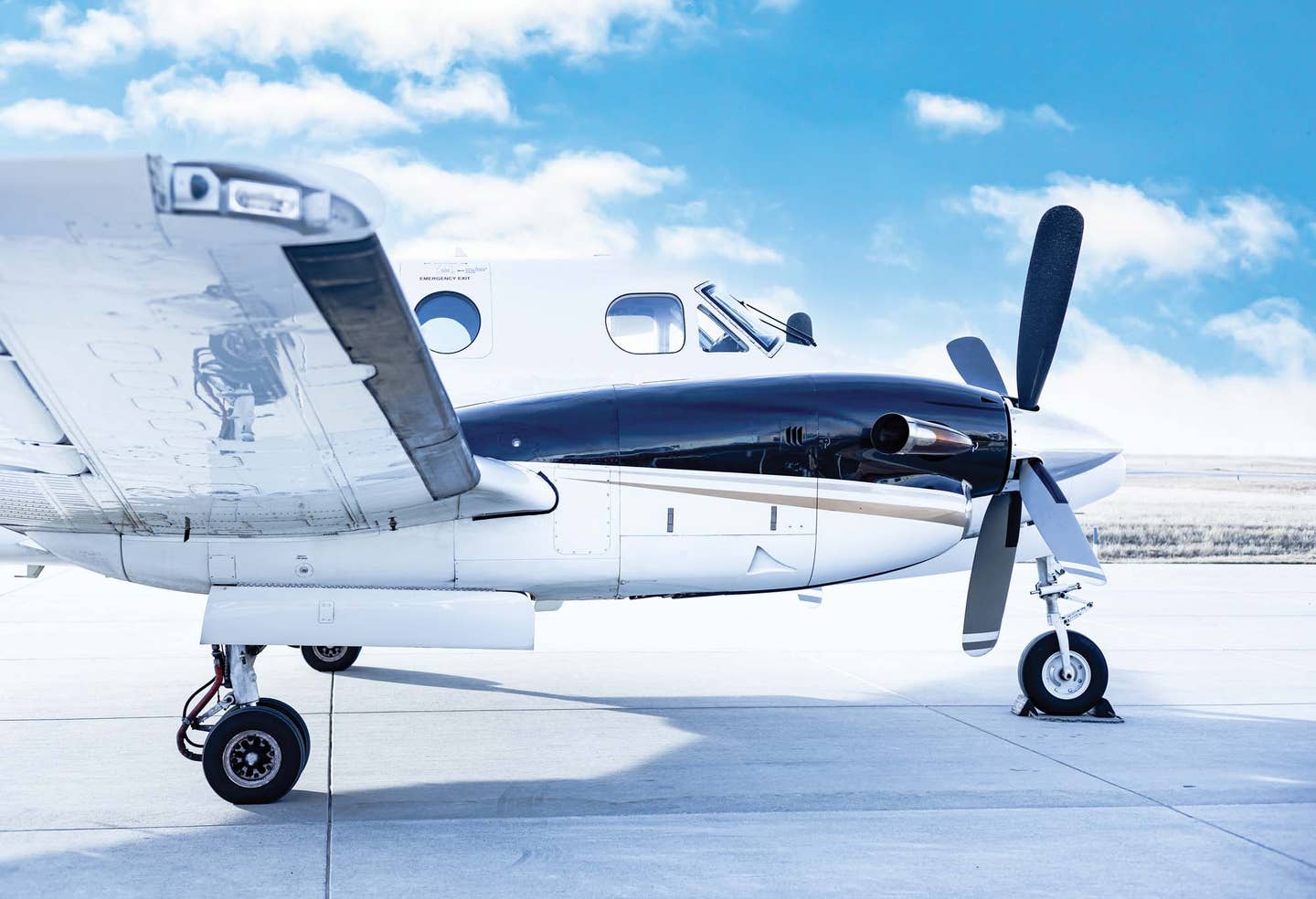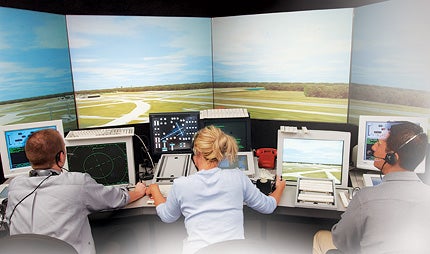 |
In past years, we've called this section "Nonflying Aviation Careers," recognizing that not everyone interested in aviation wants to be a pilot. This year, we've broadened our horizons: Many nonflying jobs apply equally to both aviation and space; in some cases, the job titles have even changed to recognize this. Covering a broader range of career fields makes sense given the recession. Business and general aviation have been particularly hard hit. Business jet demand fell by more than a third in 2009, driven in part by negative publicity about corporate jet use in the recession. Cessna, Piper, Mooney, Hawker Beechcraft and Gulfstream all had layoffs in the last 12 months (though, at this writing, there's some good news: Cessna has just called some of its laid-off employees back to work). Even Boeing and Airbus were affected, deferring orders as airlines adjusted to fewer passengers.
But there are bright spots: Many jobs are funded, directly or indirectly, by the federal government, which has put billions of dollars into stimulus funding. A new field is emerging as unmanned aerial vehicles (UAVs) move beyond military and intelligence to a broader range of applications. In the long run, as the economy recovers, many firms that have postponed hiring will have more positions to fill.
One common thread noted in conducting research for this article: The more education and experience you have, the better your chances of being hired. Today, even blue-collar jobs require basic computer skills, and as many people compete for a limited number of professional jobs, firms tend to pick those who stand out from the crowd with an advanced degree, unusual experience or both.
1 AEROSPACE MANUFACTURING & MAINTENANCE: Every vehicle that flies, manned or unmanned, in the air or space, is built somewhere, and in most cases (satellites are a notable exception), these vehicles require periodic maintenance. According to the U.S. Bureau of Labor Statistics (BLS), more than 160,000 people are employed in front-line, blue-collar aerospace jobs: machinists, assemblers, inspectors, machine-tool operators, mechanics and service technicians. Unlike most of the careers discussed here, these jobs don't require a college degree---but don't expect to walk in without training and get hired. According to the BLS, a semester or more of community-college training is required for most of these jobs. George DeWees of Embry-Riddle Aeronautical University told us that the formerly separate aircraft and powerplant (A&P) mechanic and avionics technician career fields now are merging, with firms preferring technicians who are comfortable working on any part of an aircraft: "Newer aircraft have wires going to everything, so it's really one job." These jobs pay by the hour and may involve shift work outside of typical business hours. DeWees warned that in today's economy, "It can take six months to a year to find a job."
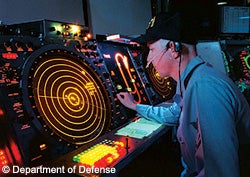 |
2 AIR TRAFFIC CONTROL: Among the most challenging fields in aviation is ATC, where controllers are responsible for separating aircraft in controlled airspace. It can be a high-pressure job, especially during peak hours at busy facilities. According to the FAA, more than 15,000 federal controllers and 1,250 contract controllers handle civil traffic in U.S. airspace, alongside more than 9,000 military controllers. Controllers work on rotating shifts, which usually amount to a 40-hour week, though overtime may be required. For those who thrive on a challenge, the job pays well---averaging $109,218 per year as of March 2009 (according to the BLS). The FAA expects the workforce to remain nearly constant for the next eight years, but with many controllers approaching the mandatory retirement age of 56, a significant number of new hires will be needed. While it's possible to be hired "off the street" (assuming you have a four-year college degree, three years of work experience or both), the FAA fills most positions either with former military controllers or graduates from one of the 31 schools participating in the FAA Air Traffic Collegiate Training Initiative. Selection as a controller is followed by 12 weeks of training at the FAA Academy, and then on-the-job training as a developmental controller at an ATC facility for two to four years. Dr. Jose Ruiz, associate professor of aviation management and flight at Southern Illinois University Carbondale, says, "The occupational outlook for air traffic controllers will continue to remain positive for at least the next 10 years."
3 AIRLINE DISPATCH: In principle, the pilot always is responsible for safely completing any flight, and that's certainly true of airline captains. In practice, with transoceanic international flights of 12+ hours, the captain needs help to contend with unexpected weather, winds and other problems en route. That's where airline dispatchers come in, sharing responsibility with the captain for initiating scheduled flights, and releasing flights to crews based on weather conditions at the departure and destination airports. Dispatchers are required to pass an examination comparable in most respects to that required for the airline transport pilot (ATP) certificate required of airline pilots; hours for dispatchers are limited by federal regulations. Joseph Miceli, president of the Airline Dispatcher Federation (and a 23-year veteran of United Airlines), told us there are about 5,000 licensed airline dispatchers in the U.S., and more internationally. He calls the outlook for the field "kind of a steady situation---airlines are trying to save jobs wherever possible, avoiding layoffs through attrition. You still need a proper number of dispatchers for flight following." Salaries can run from $20,000 to $40,000 for new hires at regional airlines, while, according to Miceli, "The majors start at $50,000, and can go to six figures with experience."
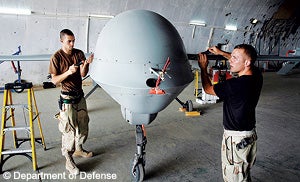 |
4 ENGINEERING: Every aerospace vehicle, whether manned or unmanned, powered by a piston engine, jet or rocket, is designed by engineers. These professional jobs require a four-year bachelor's degree as a bare minimum. Most engineers have a regular 40-hour week, but some work rotating shifts or odd hours, depending on when tests need to be conducted. The most recent BLS data shows 89,500 engineers of all types employed in aerospace product and parts manufacturing, with aerospace engineers starting at an average salary of $56,311, rising to $134,570 with additional education and experience. Paul Kostek, a distinguished lecturer for the American Institute of Aeronautics and Astronautics, gave us a realistic picture of the outlook for this profession: "Manufacturers are moving to a slow-growth model, holding onto the people they have, and slowly adding new hires over time. I don't expect to see large-scale hiring until the broad economy picks up." Angie Clover, a design engineer at Rolls-Royce, said she's had three different positions in the last seven years, and added: "Determination and perseverance are keys to a successful future in aerospace and defense---you don't win a major defense or civil engine contract every day, but the work you do over the years makes it possible to win over time."
5 AVIATION/AIRPORT MANAGEMENT: Aviation/airport managers take care of the business side of aviation. According to University of North Dakota Professor Kim Kenville, "The job comes down to managing people." A four-year degree is required, and entry-level pay is in the $30,000 to $40,000 range, increasing to six figures with experience. Kenville says that airport hiring has slowed, but jobs are still available---particularly at consulting firms, which handle issues including runway, ramp and hangar design, airport security and environmental review---driven in part by federal stimulus funds for "shovel-ready" construction projects. Students graduating from UND's aviation management track currently need "around six months" to find a permanent position, and Kenville believes that's typical. The odds can be improved by starting with an internship, which she called "readily available," paying $10 to $15 per hour (frequently subsidized by state departments of transportation). Outside of airports, Kenville says that most business connected to general aviation is slow, including insurance and financing, with the exception of repossessing aircraft whose owners have defaulted on loans.
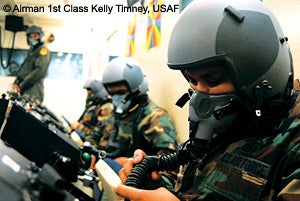 |
6 METEOROLOGY & ATMOSPHERIC SCIENCE: Meteorologists and atmospheric scientists forecast the weather---a matter of grave concern to pilots of all air and space vehicles. Minimum qualifications include a four-year science or engineering degree, but an advanced degree is highly desirable. Indeed, the BLS reports, "Those with graduate degrees should enjoy better prospects than those with only a bachelor's degree." Operational meteorologists (including U.S. Weather Service teams collocated with FAA regional traffic control centers) work round-the-clock shifts, while long-range forecasters and those involved in atmospheric research work during regular office hours. According to the BLS, there are about 9,400 meteorologists and atmospheric scientists employed in the U.S., with salaries ranging from $38,990 to over $127,100; about a third of them are employed by the federal government (mainly the National Weather Service). The field is growing, largely in the private sector, though the BLS warns that "many customers for private weather services are in industries sensitive to fluctuations in the economy," which likely means that hiring for those jobs will depend on broader economic recovery.
7 SAFETY, LOGISTICS & PLANNING: Positions in these white-collar support positions are found in large organizations such as aerospace manufacturers and airlines. A two-year community-college degree will help qualify a candidate for entry-level jobs; a four-year bachelor's degree may be required for supervisory and management positions. According to the BLS, almost 6,000 logisticians (responsible for getting raw materials, parts and subassemblies to the right place at the right time) are employed in aerospace products and parts manufacturing, at an average salary of $68,840 yearly. The BLS doesn't denote what proportion of occupational safety and health specialists and technicians are employed in aerospace businesses, but these jobs pay $26,540 to $93,620 per year. Embry-Riddle's George DeWees told us that these fields, along with maintenance control, are representative of jobs that mechanics, technicians and other hourly workers can work their way into with additional education and experience.
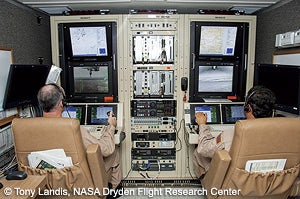 |
8 AEROSPACE MEDICINE: High-paying jobs exist for aviation medical examiners (AMEs), flight surgeons and their support personnel. AMEs and flight surgeons are physicians whose earnings, according to the BLS, "are among the highest of any occupation," averaging $186,044 per year for those in primary-care specialties (from which most AMEs and flight surgeons are drawn). Stanley R. Mohler, M.D., professor emeritus of aerospace medicine at Wright State University, estimates that around 8,000 doctors are employed in aerospace medicine on a full- or part-time basis, supported by a roughly equal number of nurses, physicians assistants and medical assistants, whose earnings range from $20,600 to $69,850. These jobs require extensive education: eight or more years for physicians. Wright State's aerospace medicine program adds another two years to that for a master's in aerospace medicine (a similar program is available at the University of Texas). Dr. Mohler told us that physicians are employed full-time by the FAA, NASA, some of the airlines and aerospace manufacturers. Some of his colleagues fly, a few at quite high altitudes---he's especially proud of Michael Barret, M.D., a Wright State grad who spent six months in orbit on the International Space Station.
9 SPACE OPERATIONS: This field is somewhat akin to air traffic control, though usually without the drama: Once a satellite is in orbit, it takes a major effort to bring it down. Professor David Whalen, chair of UND's space studies program (and a veteran satellite controller and space operations manager for NASA and the Comsat Corporation), told us entry-level jobs are available in the field for spacecraft (or satellite) controllers. Since satellites are in orbit day and night, this involves shift work (often on a rotating schedule). A college degree may not be required (though some organizations require one). Past experience from the military, NASA, ATC or civil nuclear power helps. With additional education, controllers can move up to positions as mission analysts (involved anytime a change is expected or observed in a spacecraft orbit) or satellite engineers (who troubleshoot problems). Whalen estimates that several thousand people are employed in these jobs with pay in the $50,000 to $75,000 range. He notes that entry-level jobs can be pretty boring: "Most of the time you spend hours at a console while nothing happens." But the higher-end jobs can be quite interesting.
10UAV OPERATIONS: UAVs were a big surprise in our research for this year's article---they came up in multiple interviews. Everyone we spoke to on the subject expects UAV use to expand rapidly. One told us that, in the long run, every flying job that's "boring, dangerous or dirty" will move to unmanned vehicles, mentioning firefighting, pipeline patrol and agricultural spraying as examples. There are at least two unique career fields associated with UAVs. UND Professor Mike Nelson (formerly an Air Force fighter pilot with the handle "Spike") says, "There's at least one highly qualified pilot in charge of any UAV." That's right, we've now come up with what may be the ultimate nonflying aerospace job: a pilot who never leaves the ground! Qualifications to fly UAVs are basically the same as those for entry-level airline jobs: An FAA commercial pilot license, preferably multi-engine (though single-engine may be enough, depending on the vehicle) with several hundred hours' experience. A four-year degree and ATP and CFI certifications are pluses, and for the jobs available now, U.S. citizenship is required. Salaries start at $50,000, reaching $75,000 with a couple years of experience. As Kansas State University Professor R. Kurt Barnhart says, "It sure beats CFI pay!" The catch is that most of the available jobs today are overseas, working for defense contractors, or along the U.S. border. The pilot (or "vehicle operator") flying the UAV from the "left seat" isn't the only person involved---most UAVs have a "right seat" mission payload operator to point the sensors and track objects of interest. In the military, those jobs are filled by enlisted personnel who typically earn quite a bit less than the flight-rated officers in the left seat.
| Learn More |
|
Airline Dispatchers Federation: www.dispatcher.org
Airport Consultants Council: www.acconline.org American Institute of Aeronautics and Astronautics: www.aiaa.org American Meteorological Society: www.ametsoc.org Embry-Riddle Aeronautical University: www.erau.edu Kansas State University: www.k-state.edu National Air Traffic Controllers Association: www.natca.org Spartan College of Aeronautics: www.spartan.edu University of North Dakota: www.aero.und.edu U.S. Bureau of Labor Statistics: www.bls.gov Wright State University: www.med.wright.edu |

Subscribe to Our Newsletter
Get the latest Plane & Pilot Magazine stories delivered directly to your inbox






